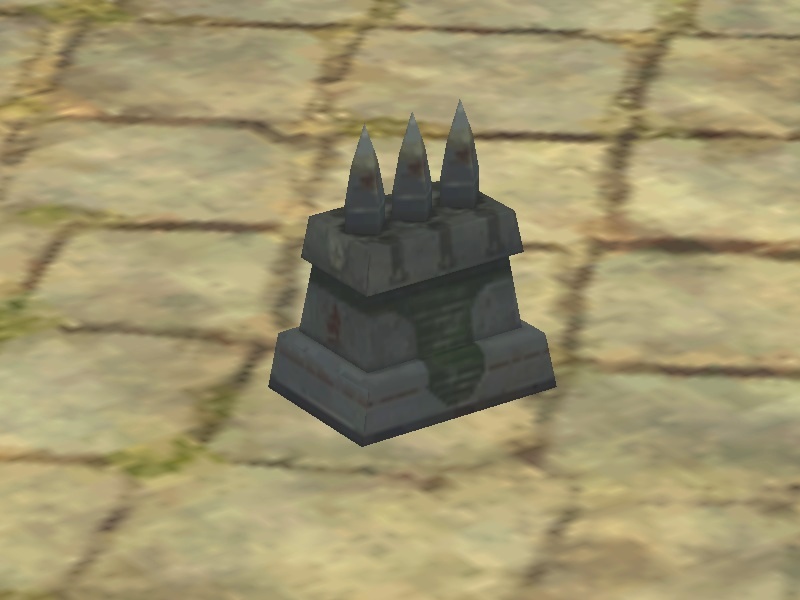Bombshell Genius

A case of three 3t5A thermobaric charges
OUT OF CHARACTER INFORMATION
- Intent: To provide a new generation of thermobaric charges
- Image Source: Jedi Knight II: Jedi Outcast
- Canon Link: N/A
- Restricted Missions: N/A
- Primary Source: Thermobaric weapon, 3t4 man-portable missile
- Manufacturer: Ringovinda Systems
- Model: 3t5 thermobaric charge
- Affiliation: Open-Market
- Modularity: Yes: four models (see below) variable in size, range and yield - can also replace the warheads by ion, penetrator or regular HE charges; the mortar-mounted version can fit augmentation rings to adjust for range
- Production: Mass-Produced
- Material: Detonite, standard electronic components, plasteel casing, standard rocket components, propylene oxide
- Classification: Man-portable missile
- Size: Handheld
- Length: 74 cm (3t5A), 80cm (3t5B), 1m (3t5C), 2m (3t5D)
- Diameter: 72 mm (3t5A), 120mm (3t5B), 155mm (3t5C), 203mm (3t5D)
- Weight: 5 kg (3t5A), 14 kg (3t5B), 35kg (3t5C)
- Ammunition Type: Missile
- Ammunition Capacity: 1 (launch platforms may carry more than one)
- Effective Range:
- 3t5A: 5 km (head-on, vs. aircraft) 10 km (vs. ground targets)
- 3t5B: 5 km (with all six augmentation rings)
- 3t5C: 10 km (head-on, vs. aircraft), 25 km (vs. ground targets)
- 3t5D: 25 km (head-on, vs. aircraft), 125 km (vs. ground targets)
- Rate of Fire: Single action
- Thermobaric charge
- Comes in four models, denoted 3t5A, 3t5B, 3t5C and 3t5D, for man-portable, mortar, vehicle/fighter mount or bomber mount respectively
- Delayed homing (unavailable on the 3t5B)
- Great explosive firepower: a 3t5A is equivalent to a standard fighter-mounted proton bomb, a 3t5B or 3t5C is equivalent to two, a 3t5D is equivalent to a whopping four proton bombs (firepower-wise)
- Great tracking
- High blast radius: the 3t5A has a blast radius of 60m, the 3t5B and 3t5C having a blast radius of 200m, and the 3t5D having a blast radius of 400m, with maximum destruction achieved within 20m, 40m and 60m of the blast point respectively
- Very effective against targets in confined spaces
- Pressure detonation: should any Force-user or tractor beam attempt to divert its course, while in flight, it will detonate
- Fast cook-off time: if a launch platform with 3t5s still loaded catches fire, it will explode soon thereafter if the ambient atmospheric pressure is high enough
- Pressure detonation: a stray blaster shot, or stray shrapnel, that hits a 3t5 will cause it to detonate
- The 3t5B cannot be used against aircraft and does not have the option of delayed homing
- Its effectiveness decreases significantly when the target's speed rating gets better than average starfighter-scale ships, rendering it much less effective against fighters (when contrasted against bombers or gunships)
- Against aircraft, its effective range is highly dependent on its angle of attack: firing a 3t5 in a stern chase or even for flanking will result in a much lower wffective range than attacking aircraft head-on
- Can be fooled by flares
- Delayed homing may easily be back-tracked
- Useless at high altitudes or in space combat due to its reliance on ambient oxygen
During the ground battle on Ord Radama, the Silver Jedi army saw thermobaric charges in operational use, which were hitherto unknown to them. Four variants were developed to fit the expected launch platforms: the 3t5A for the MiniMag or Plex man-portable missile launchers, the 3t5B for 120mm mortars, such as the Jairdain heavy mortar in use by the Silver Jedi army, the 3t5C for use on fighters, vehicles or standard missile defensive emplacements and the 3t5D for use on bombers.
A thermobaric charge contains a small detonite scatter charge surrounding a core of propylene oxide and, upon detonation, creates a vacuum, which causes structures around the blast to collapse and organic beings caught inside the blast radius will likely suffer from lung rupture if close enough from the center of the blast. In addition, along with the pressure wave, the fireball extends its thermal effects, also causing the targets to burn, sometimes even to molten slag. For these reasons, thermobaric charges are most useful against targets in confined spaces. The resulting firepower is devastating provided a thermobaric charge is fired: a PLX-series man-portable launcher will find itself firing the equivalent of proton bombs with 3t5As, a mortar firing a 3t5B or a fighter firing a 3t5C will have the equivalent of two proton bombs in one round, and the 3t5D has the equivalent firepower to four proton bombs. However, due to the reliance of thermobaric charges on ambient atmospheric oxidizers, thanks to its near-complete absence of oxidizer in the thermobaric charge, it is virtualy useless against targets at high altitudes and completely useless against targets in space, unless used in boarding actions or after hulls have been breached, effectively restricting it to ground use. Also, it is pressure-detonated: it means that Force-users attempting to deviate its course will force it to detonate, but it will also detonate by stray blaster or shrapnel fire.
As with its predecessor, the 3t4, the 3t5 features delayed homing: the operator can have the missile launched as if unguided for a set amount of time (usually 3-5 seconds, programmed when the targeting solution is being established) and then have it turn on the infrared guidance system after that time has elapsed. However, it is not available on the 3t5B due to the nature of firing mortars, which preclude them from hitting aircraft or using guidance systems.
Important notes:
- The 3t5C counts as one standard concussion missile for fighter use
- The 3t5D counts as one standard proton bomb for fighter use




